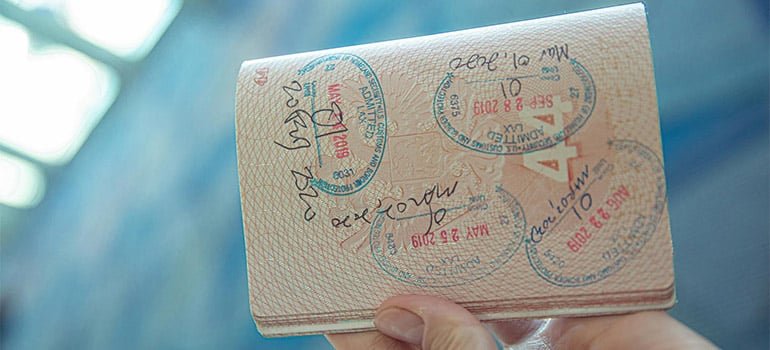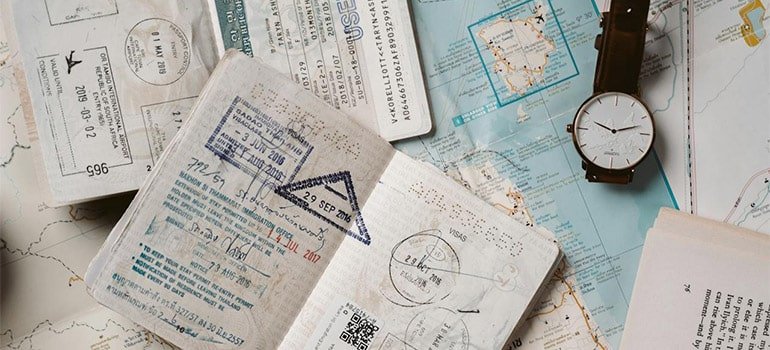The Different Types of Visas

Get a Free Moving Quote Now!
Start Your International Moving Journey





Chances are you know all about work visas and student visas, but what about asylum visas? Cultural exchange visas? In the world of visas there are many different types you may obtain, all of which allow you to reside in another country for a restricted period of time.
The application process, pricing, time allowed, the territories they cover, whether they allow multiple or single entry and the type of visa is all dependent on which country will be issuing said visa and what you will be using it for.
For the most part, you can apply for a visa beforehand at a certain country’s embassy or consulate or occasionally at your point of origin, details of which may be available on projectvisa.com.

To get an idea of which visas are issued for what, peruse the extensive (but by no means exhaustive) list below.
Short-stay visas
Also known as the visitor visa, short-stay visas are for people who are only visiting their country of origin for a short, temporary period of time.
- Tourist visa – a visa granted to citizens for leisure purposes only, no funny business (or regular business) allowed
- Business visa – used for the aforementioned business reasons and occasionally preclude a work visa
- Working holiday visa – allows workers traveling to a country to take on temporary employment or study for supplemental purposes
- Refugee visa – issued to person or persons fleeing persecution, war and/or natural disaster
- Medical visa – for hospital visits required in other countries
- Cultural exchange visa – given to athletes and performing artists for concerts, sporting events, competitions, etc. (AKA the athletic or artistic visa)
- Private visa – by invitation only, or more specifically, visas for private visits to residents of that country
Long-stay visas
As the name suggests, long-stay visas are visas that allow a person to stay in a country for a much lengthier period of time than short-stay visas while still facing eventual expiration.
- Work visa – perhaps the most well known visa, a work visa allows an employee to work in another country for an extended albeit temporary period; it is often more difficult to obtain but is in effect longer than a business visa
- Student visa – one of the more common visa types which allows students to study at universities and other higher learning institutions in another country
- Residence visa – for people taking up long-term residence, can also be used for those eventually seeking permanent residence
- Journalist visa – required in some countries (Cuba, Iran, North Korea and the United States to name a few) for work in the field of journalism
- Asylum visa – for those fearing persecution from their country due to their opinions, political beliefs or relation to a specific social group

Immigrant visas
Immigrant visas are specifically for people seeking to immigrate to the country they’re applying for a visa with. Obviously.
- Marriage visa – granted for a limited amount of time before a marriage or civil partnership, called a fiancee visa in some countries
- Spousal/partner visa – a visa given to the spouse or partner of a resident so they may begin to settle into that country
- Pensioner visa – only valid in some countries; dependent on age and retirement claims in which the visa holder does not work in that country but does have a foreign source of income (AKA the retiree visa or retirement visa)
Official visas
Official visas are handed out to anyone doing official government work for and representing their native country in another country. These can be in the form of diplomatic visas which are only given to people with diplomatic passports and courtesy visas, which are held by representatives from foreign government and government organizations who are not diplomats.
Transit visas
These visas are held by anyone who works in the transit industry and has to travel through and into other countries for work. Depending on the size of the country in question, visas can last several hours to a few days,
- Airside transit visa – required by some countries when entering airports even though the owner will travel through passport control regardless
- Crew member, steward or driver visa – workers who are trained work on aircrafts, seafaring vessels, trains, trucks, buses, commercial vehicles or any ships fishing in international waters

On-arrival visa
Commonly known as the Visa on Arrival, a VOA is given at the country’s port of entry before you enter immigration. Some countries choose whether you need a visa in advance depending on the type of visa you will require.
Exit visas
Certain countries even require you to have an exit visa before you’re allowed to leave their country, regardless of whether you are a citizen or foreign visitor. You may recall that exit visas were also required for citizens to leave Nazi Germany, Italy (when it was ruled by the Republican Fascist Party) and the Soviet Union when they were in power.
If necessary, most visas have the ability be extended, whether they are given to you in the form of stamps on your passport or are issued electronically as some countries have begun doing.
